The Kingdom of Benin took centuries to build and just a few days to raze to the ground.In February 1897, British forces stormed the ancient kingdom's capital city with rockets, shells and Maxim guns capable of firing 600 rounds per minute.
A flotilla of warships joined the assault from adjacent waterways.Benin's defenders, fighting with blades and muskets, were swiftly massacred. The British burned the city and built a golf course on the ruins.
Victorious soldiers also looted thousands of precious artifacts from shrines and palaces. Within months the "Benin Bronzes" were on display at the British Museum in London.
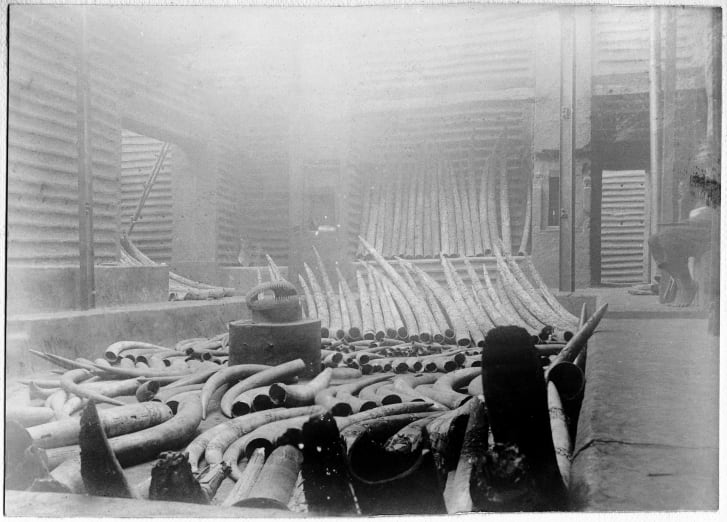
Museum as a weapon
The bronzes, which are mostly made of brass, tell a story of life in the royal court through finely-crafted renderings of kings, warriors, hunters with wild animals, and foreign explorers.
The treasures of Benin are now scattered across 160 museums -- and many more private collections -- around the world. Some of the bronzes are considered to be among the finest and most valuable African artworks, with single pieces selling for millions of dollars.
As a curator at the Pitt Rivers Museum of the University of Oxford, Dan Hicks presides over one of the world's largest collections ofartifacts looted from Benin.
But in his unsparing new book, "The Brutish Museums," he makes a case for their return, while calling for greater honesty in the telling of colonial history and the enabling role played by museums like his own.
Hicks says his position was partly informed by the "Rhodes Must Fall" movement, which erupted in South Africa in 2015 and spread to the University of Oxford, where he serves as a professor of contemporary archeology.
Students demanded the removal of a statue of colonial tycoon Cecil Rhodes within a wider "decolonization" campaign that denounced the Pitt Rivers Museum as "one of the most violent spaces in Oxford."
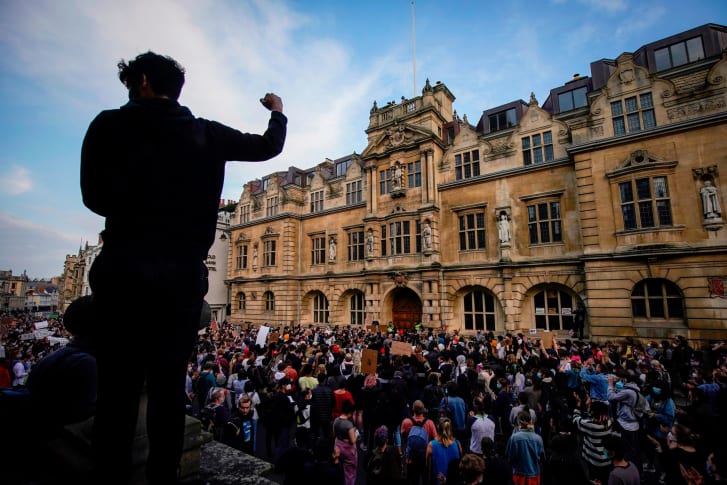
Hicks accepts the charge. The museum was a "weapon" -- as integral to imperial domination as the Maxim gun, he writes --- that was used to "legitimize, extend and naturalize new extremes of violence within corporate colonialism."
Exhibitions reduced cultures to trophies in glass cases in order "to tell the story of the victory of Europeans over Africans," he said in a phone interview. They were used "to inspire colonial administrators and soldiers ... who fought these wars and thought they were doing so in the name of civilization."
The bronzes were feted as masterpieces but they were presented as the work of inferiors.
Hicks quotes one British Museum curator saying that he was "puzzled to account for so highly developed an art among a race so entirely barbarous as were the Bini," referring to the ethnic group -- also known as the Edo people -- that founded the Kingdom of Benin.
The author draws a parallel between these colonial-era art displays and the pseudoscientific exhibitions that compared fake skulls as evidence of racial hierarchies and were phased out after World War II due to their association with fascism. He believes the ongoing display of looted heritage amounts to a continued celebration of violence and white supremacy.
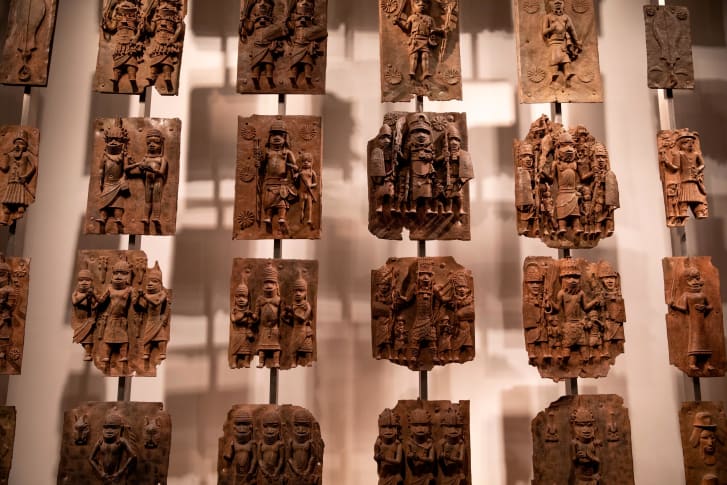
Clear-cut case
Hicks' book focuses on the Benin Bronzes, as he believes they represent an indisputable case for restitution, which Nigeria has sought since its independence from the British Empire in 1960.
(The Kingdom of Benin is located in what is now the southern Nigerian state of Edo.)
Drawing on accounts from soldiers and British officials, the author dismantles myths to tell a story of brutality and greed.
Officially, the "punitive expedition" of 1897 was a response to an attack on a convoy led by Captain James Phillips, consul-general of the Niger Coast Protectorate, a month earlier.
Phillips and several of his men were killed by Bini troops while on a missionto, ostensibly, lobby the king of Benin over access to the valuable palm oil and rubber in his territory.
But documents from Protectorate leaders show plans for a punitive expedition were discussed as early as 1892. Phillips himself had written to Prime Minister Lord Salisbury requesting weapons for an invasion of Benin to ease the flow of commerce.
In this light, Hicks argues the mission was designed to provide a pretext for attack. He also shows that such a large British force, which he estimates at around 5,000 men with 10 warships and 38 Maxim guns, could not have been assembled in the month between expeditions.
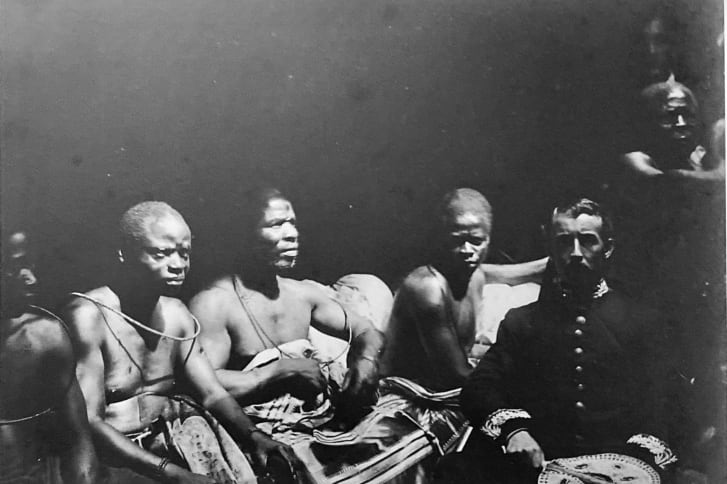
The destruction of Benin was celebrated in British newspapers, and soldiers received medals for their role in it. But Hicks disputes their supposed heroism.
Accounts from military leaders describe indiscriminate slaughter from a safe distance, while warships destroyed towns and villages along their route. Eight British deaths were reported to the Houses of Parliament but no effort was made to tally Bini losses, despite inquiries from ministers.
The loss of heritage was also incalculable. The earthworks of Benin were once an archeological marvel comprising a 16,000-kilometer network of walls that formed one of the world's largest man-made structures.
They were -- along with palaces, homes and religious sites -- reduced to rubble.British officials and museums downplayed the destruction and claimed damage was accidental.
This is contradicted by the systematic approach Hicks reveals in soldiers' diaries. "Work to be done Saturday February 20th," wrote Captain Egerton, chief of staff for the expedition. "Walls and houses to be knocked down. Queen Mother's house to be burnt."
Officially, looted artifacts were sold to pay the expedition costs. But Hicks cites a curator at the British Museum who later admitted much of the take was "shared out carefully among the officers."
A museum catalog revealed that bronzes were acquired "via the liquidation of estates of old soldiers."

Growing movement
While Benin's experience may have been exceptional for the scale of destruction and the heritage lost, Hicks situates it within the routine practice of colonial pillaging during the "scramble for Africa," as imperial powers carved up the continent into separate spheres of influence from the late 19th century to the breakout of World War I.
Throughout this period, many prized African artifacts arrived in Western museums via violent conquest, from sculptures taken by France in the sacking of Abomey, to the gold looted by British soldiers from the Asante Empire.
Hicks challenges museums like his to address and reject rather than defend the legacies of colonialism in their collections.
"The Brutish Museums" is especially timely, as calls for the reclamation of stolen heritage grow louder in the wake of the Black Lives Matter movement.
Activists have taken direct action to reclaim lost treasures, and dispossessed nations have escalated long-running campaigns.
The message is being heard around Europe.
Germany recently established guidelines for restitution. The 2018 Sarr-Savoy report, commissioned by the French government, meanwhile found that 90% of the "material cultural legacy" of sub-Saharan Africa lies outside the continent and recommended that artifacts in France -- a total of around 90,000 pieces -- be made subject to return upon request.
But action has been slow to materialize.
France has thus far authorized the return of just 27 pieces to Benin and Senegal. European museums have offered loans rather than permanent returns, while Nigeria's government has resorted to buying Benin Bronzes at a premium from auctions.
Hicks blames intransigence from museums. "As a sector, our leadership has tried to sweat this one out," he said, while his book invites readers to help break the impasse by joining the movement for restitution.
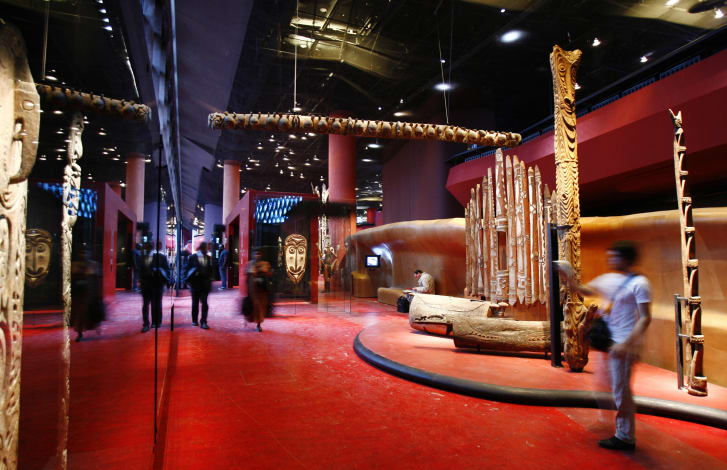
Resisting returns
Arguments against restitution have evolved since 1981, when the British Museum reportedly claimed the Benin Bronzes were acquired legally as "the British were the legitimate authority."
More recently, curators have argued that they are better placed to showcase cultural heritage. In 2003, the British Museum's director made a case against returns on the basis that artifacts should be "housed in safety, conserved, curated, researched, exhibited and made available to the widest possible public."
The British have also previously resisted requests to loan bronzes to Nigeria, claiming the pieces were too fragile to travel. Concerns have been raised about the standard of facilities to house the bronzes -- although the British Museum has recently helped secure funding for a new museum in Benin City, Nigeria.
Hicks notes that bronzes preserved for centuries at Benin's royal court have only been lost, neglected or destroyed since arriving in London. His research led to the discovery of sculptures abandoned in broom cupboards and used as doorstops, and ivory artifacts repurposed as piano keys and billiard balls.
French curators have pushed back against the Sarr-Savoy report's recommendations, which could leave much of their collections vulnerable to restitution. The authors say such fears are unwarranted, and that claims will likely focus on a small proportion of objects with "high symbolic value."
Museums cite de-accession laws that prevent them from dispersing their collections.
But Hicks' analysis shows that hundreds of bronzes are held outside of national museums governed by such laws. He argues that national museums should establish a restitution framework for colonial loot similar to the Washington Principles, which require museums to pro-actively identify and return art that was taken by the Nazis.
Curators have also suggested compromises such as adding context about how items were acquired to their exhibits.
Director of the V&A, Tristram Hunt, recently wrote in Prospect magazine that he had changed how the museum presents items from the Asante Empire so as to "explain their place within the ugly history of imperial trophy hunting."
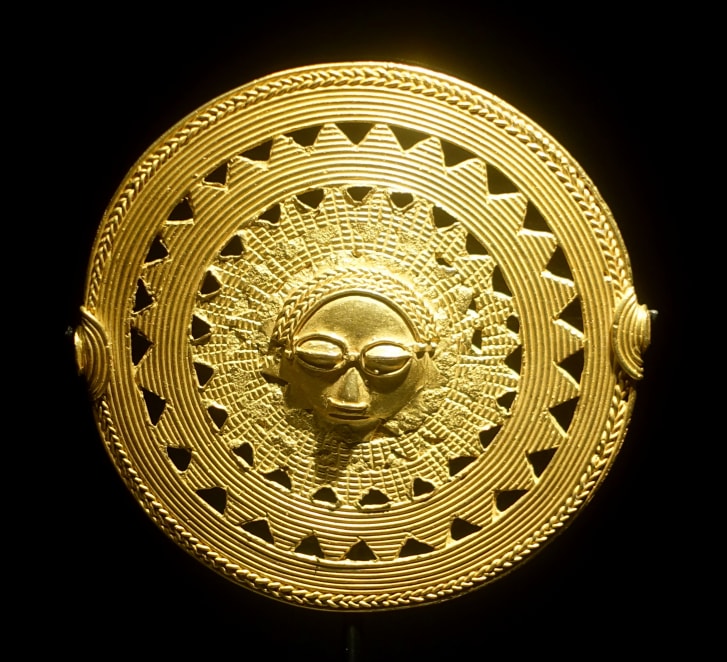
The road ahead
Hicks dismisses "relabeling" as a superficial ploy to avoid questions of ownership and meaningful action. He hopes to eventually see museums "where nothing is stolen, where everything is present with the consent of all parties."
This should begin with curatorial work for African collections that has long been neglected, he said, in order to establish exactly which pieces are held where. His book features an inventory of Benin Bronzes in an attempt to track down those that are still missing.
Hicks also plans to create databases for other lost works, and he has launched a project to document cases of looting on military expeditions.
Where an item's provenance is established, the author and curator suggests that restitution claims proceed on a case-by-case basis through dialogue between claimants and museum trustees. Where objects are not sought for immediate return, a transfer of ownership could signal recognition of their origin in lieu of restitution.
The priority for European curators should be to enable African scholars to study African heritage, he said, arguing that the progress of museums across the continent, from Dakar to Benin City, is a trend to be supported rather than obstructed.
Hicks also believes Western museums can still play an important role providing education about the world's cultures, but only if they embrace radical change.
"The consequence of ignoring these questions is losing our social legitimacy," he said.
"The Brutish Museums: The Benin Bronzes, Colonial Violence and Cultural Restitution," published by Pluto Press, is available now.
Latest Stories
-
CHAN 2024Q: ‘It’s still an open game’ – Didi on Ghana’s draw with Nigeria
8 minutes -
CHAN 2024Q: Ghana’s Black Galaxies held by Nigeria in first-leg tie
1 hour -
Dr Nduom hopeful defunct GN bank will be restored under Mahama administration
2 hours -
Bridget Bonnie celebrates NDC Victory, champions hope for women and youth
2 hours -
Shamima Muslim urges youth to lead Ghana’s renewal at 18Plus4NDC anniversary
3 hours -
Akufo-Addo condemns post-election violence, blames NDC
3 hours -
DAMC, Free Food Company, to distribute 10,000 packs of food to street kids
4 hours -
Kwame Boafo Akuffo: Court ruling on re-collation flawed
5 hours -
Samuel Yaw Adusei: The strategist behind NDC’s electoral security in Ashanti region
5 hours -
I’m confident posterity will judge my performance well – Akufo-Addo
5 hours -
Syria’s minorities seek security as country charts new future
5 hours -
Prof. Nana Aba Appiah Amfo re-appointed as Vice-Chancellor of the University of Ghana
6 hours -
German police probe market attack security and warnings
6 hours -
Grief and anger in Magdeburg after Christmas market attack
6 hours -
Baltasar Coin becomes first Ghanaian meme coin to hit DEX Screener at $100K market cap
6 hours

